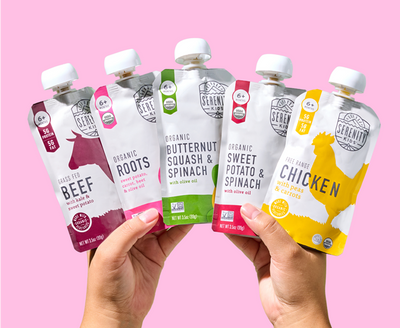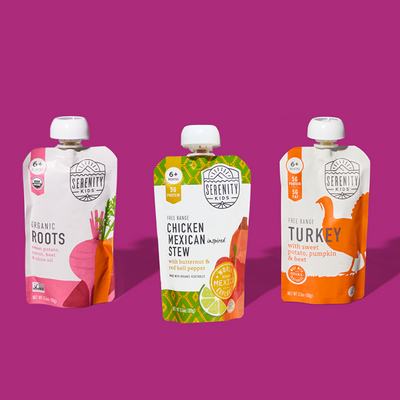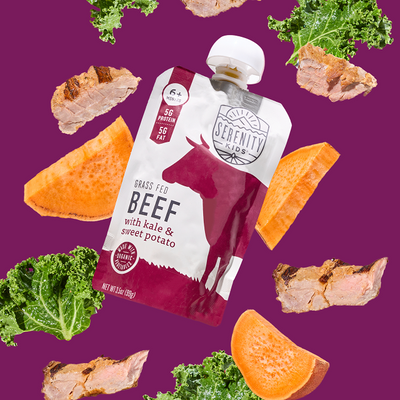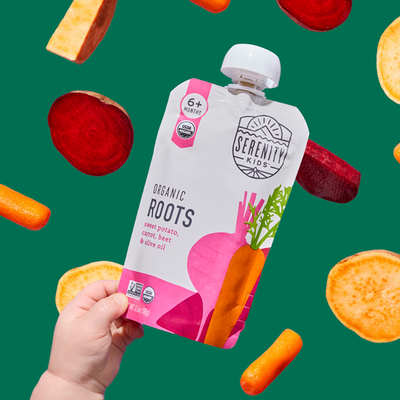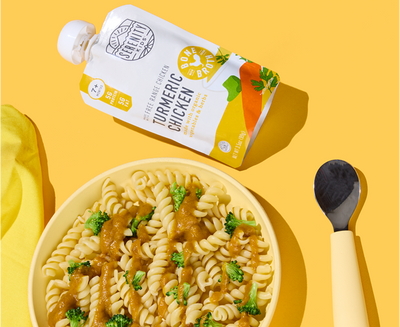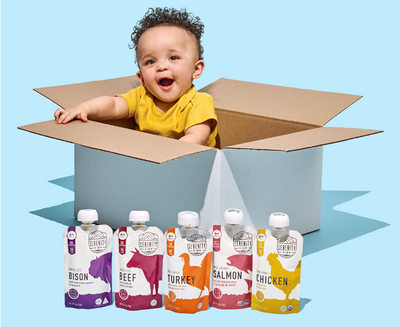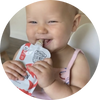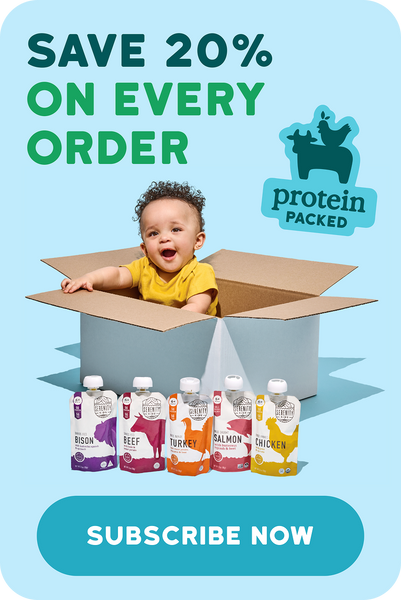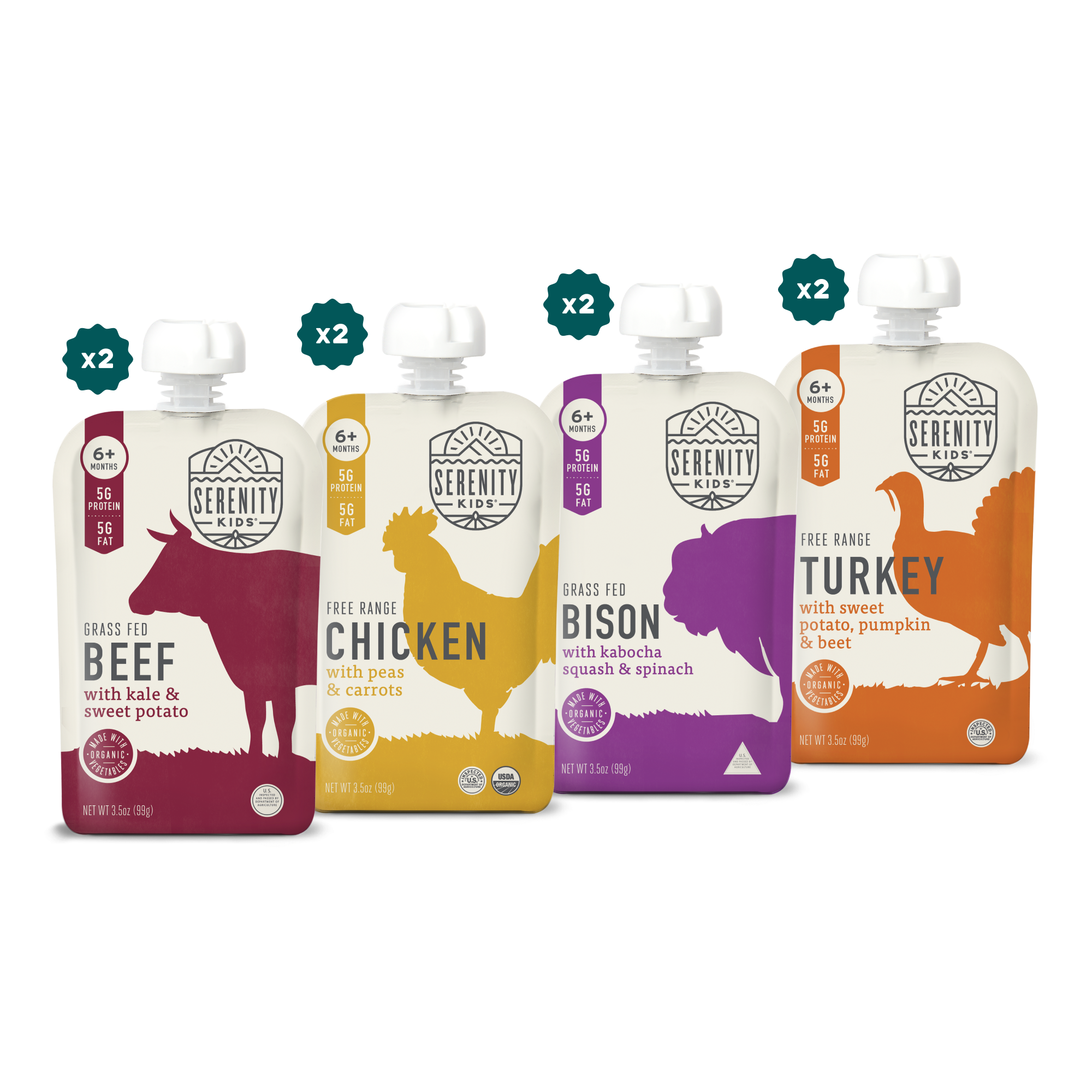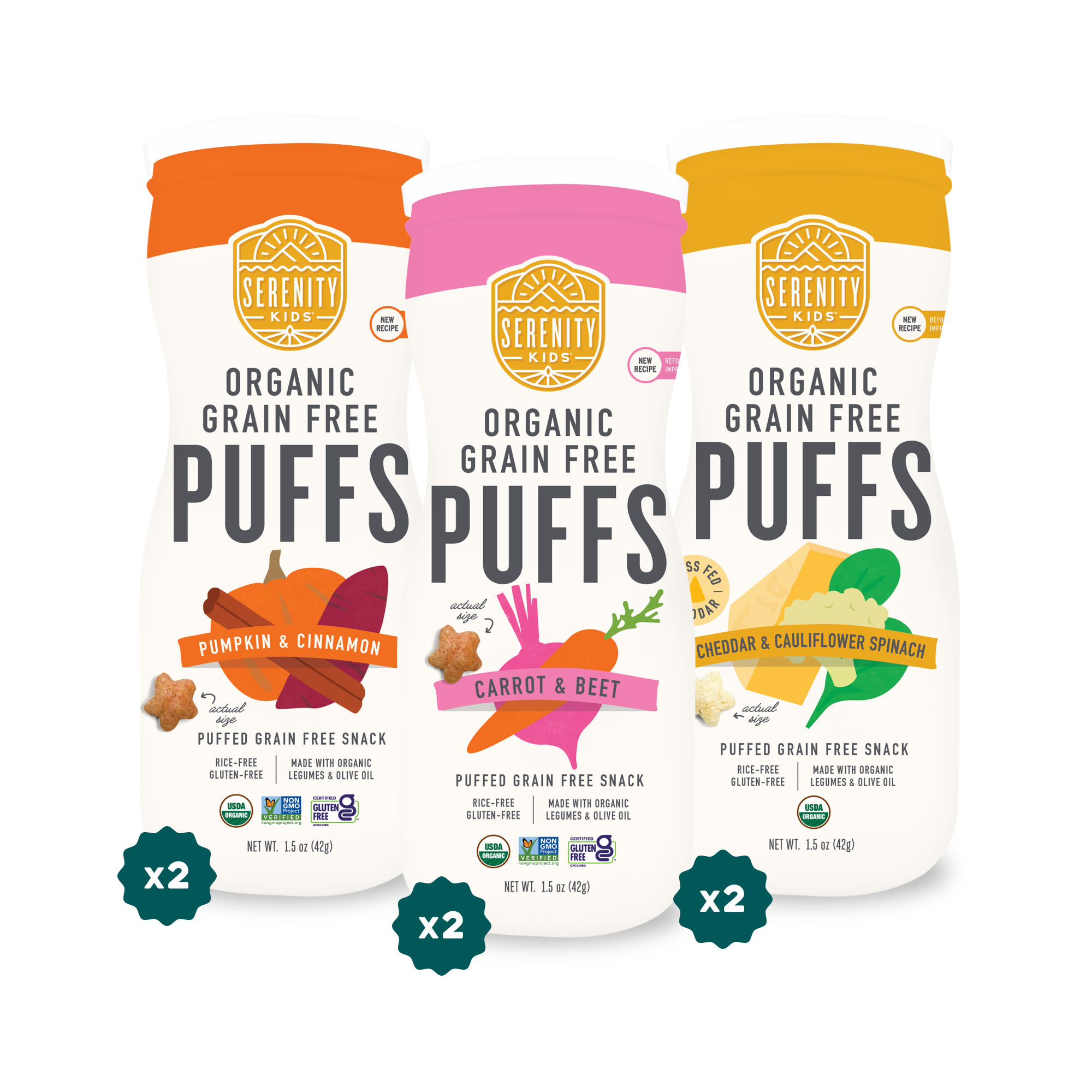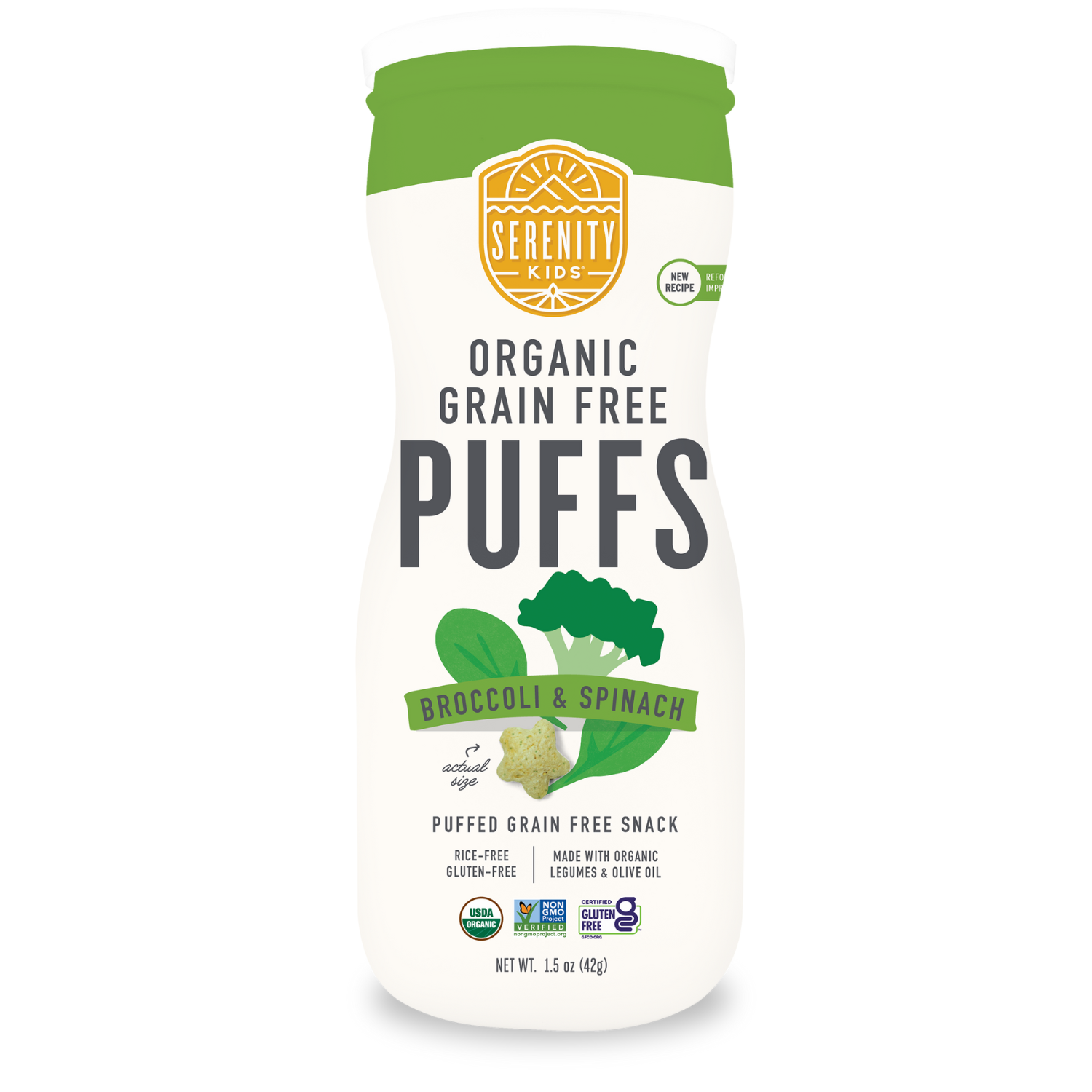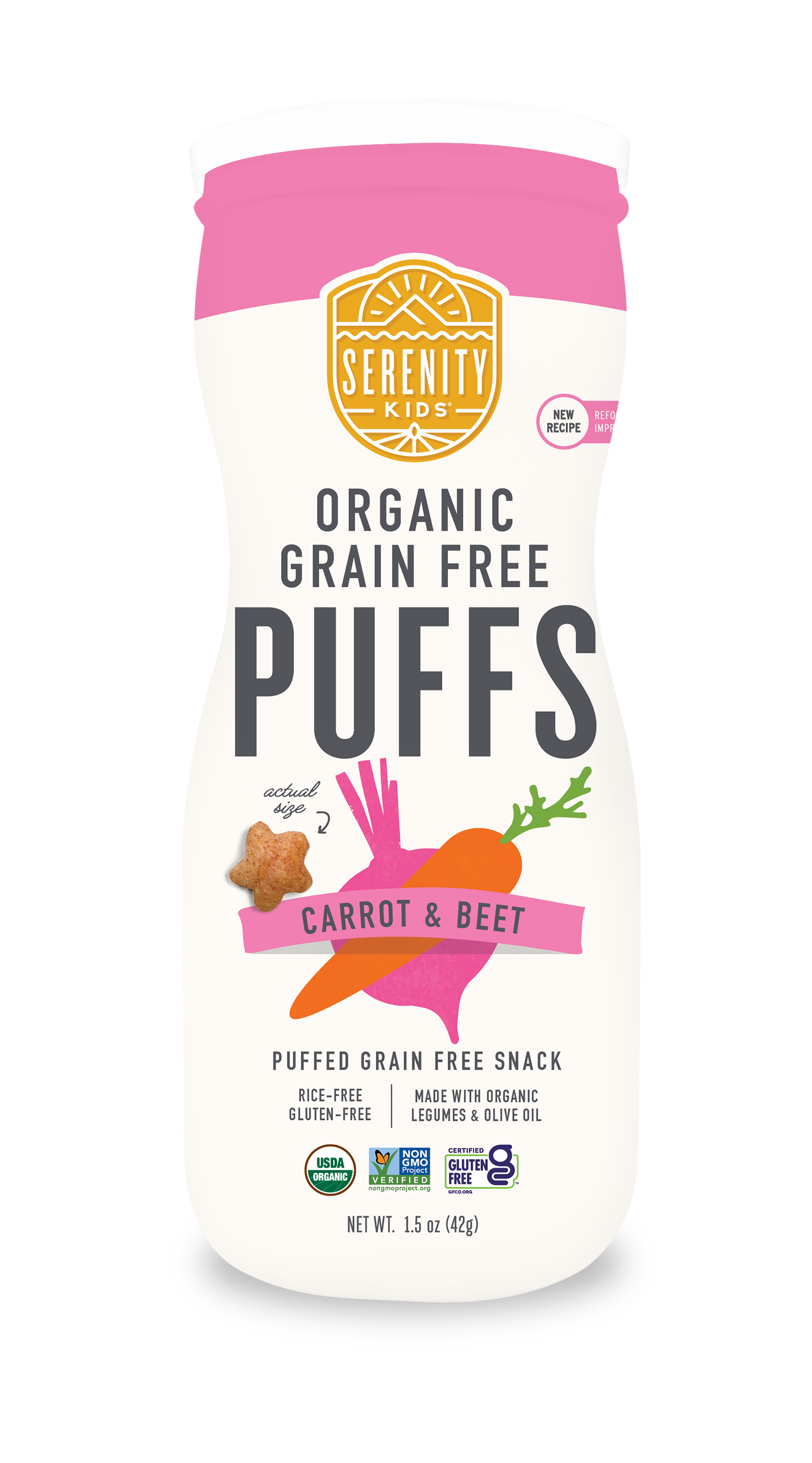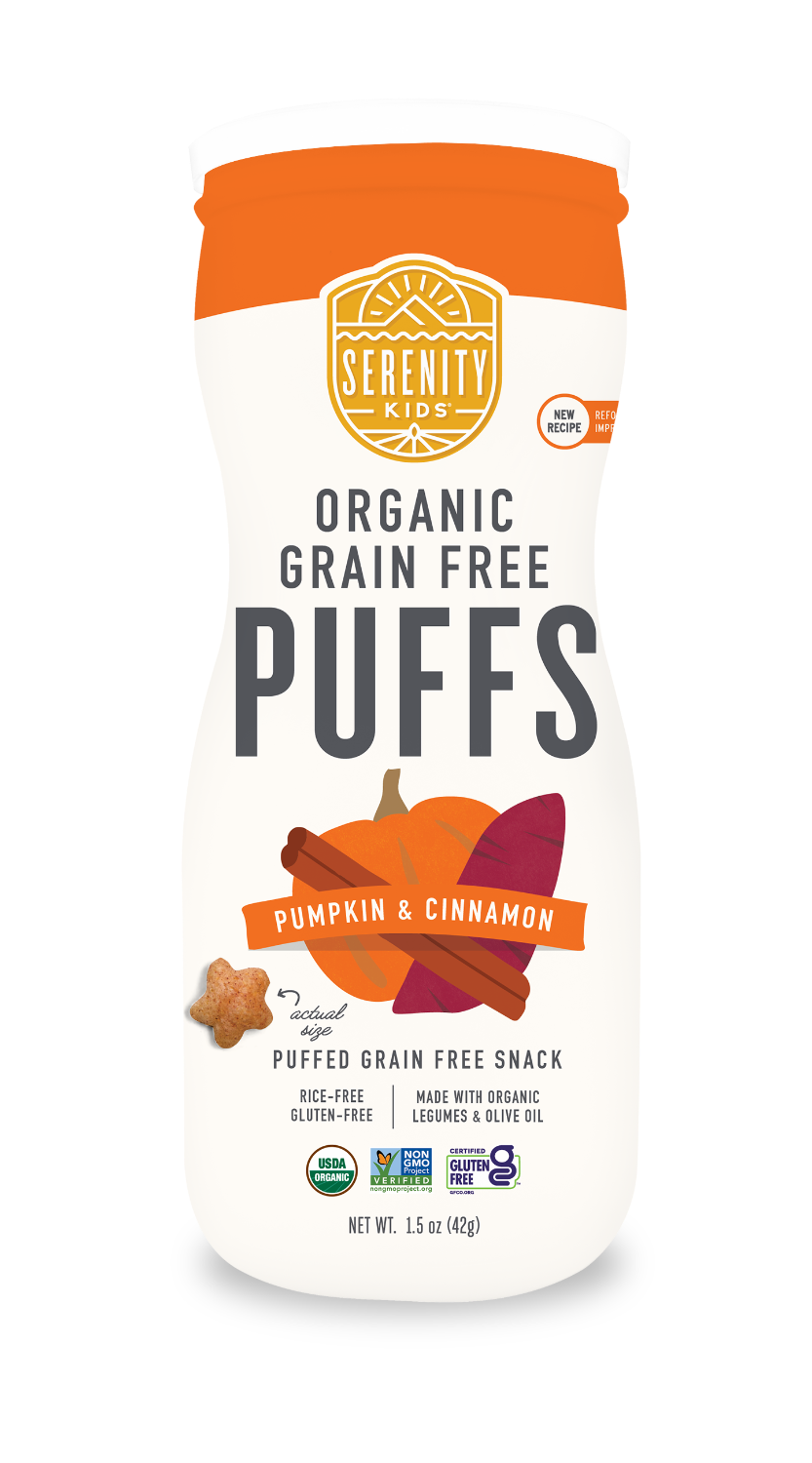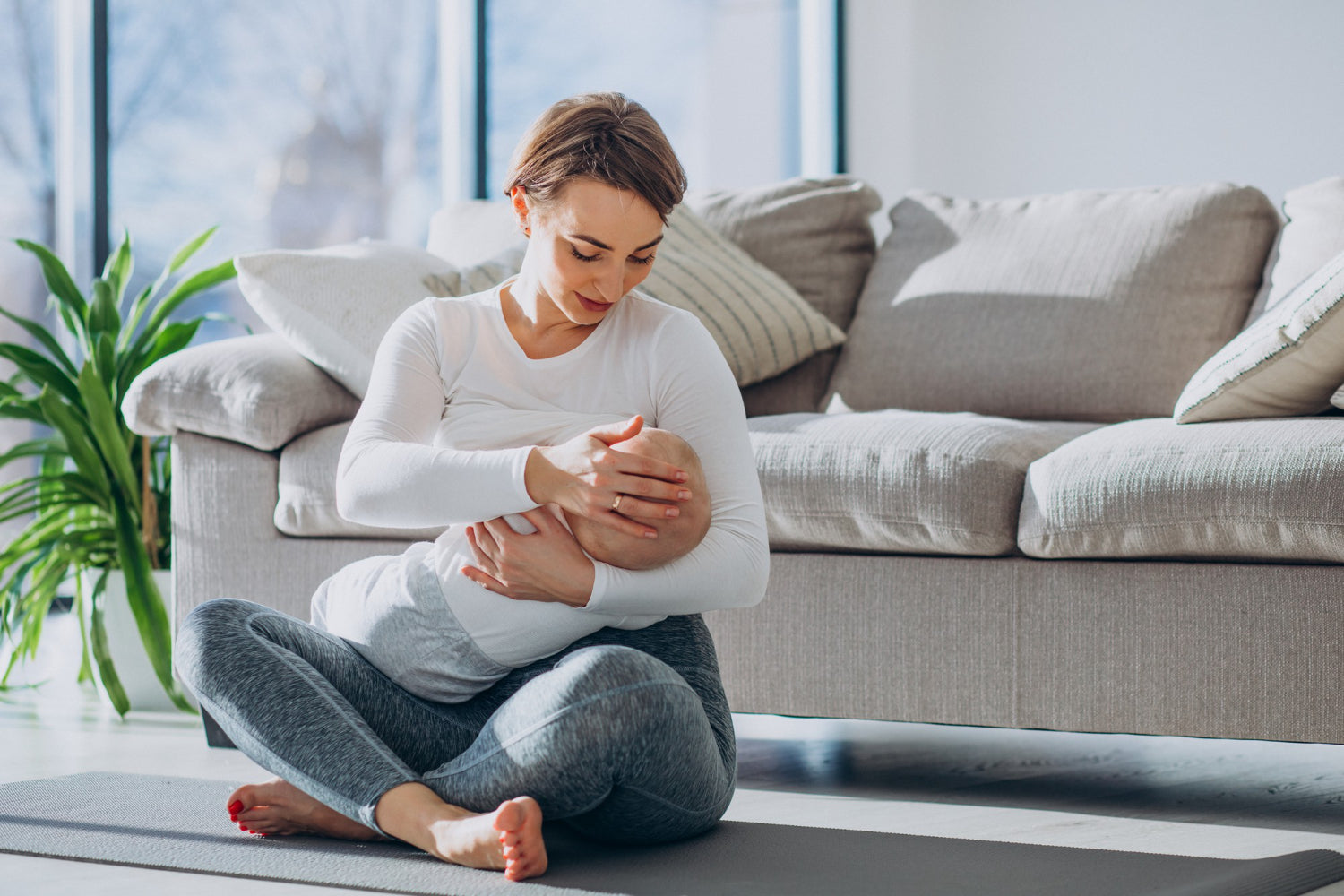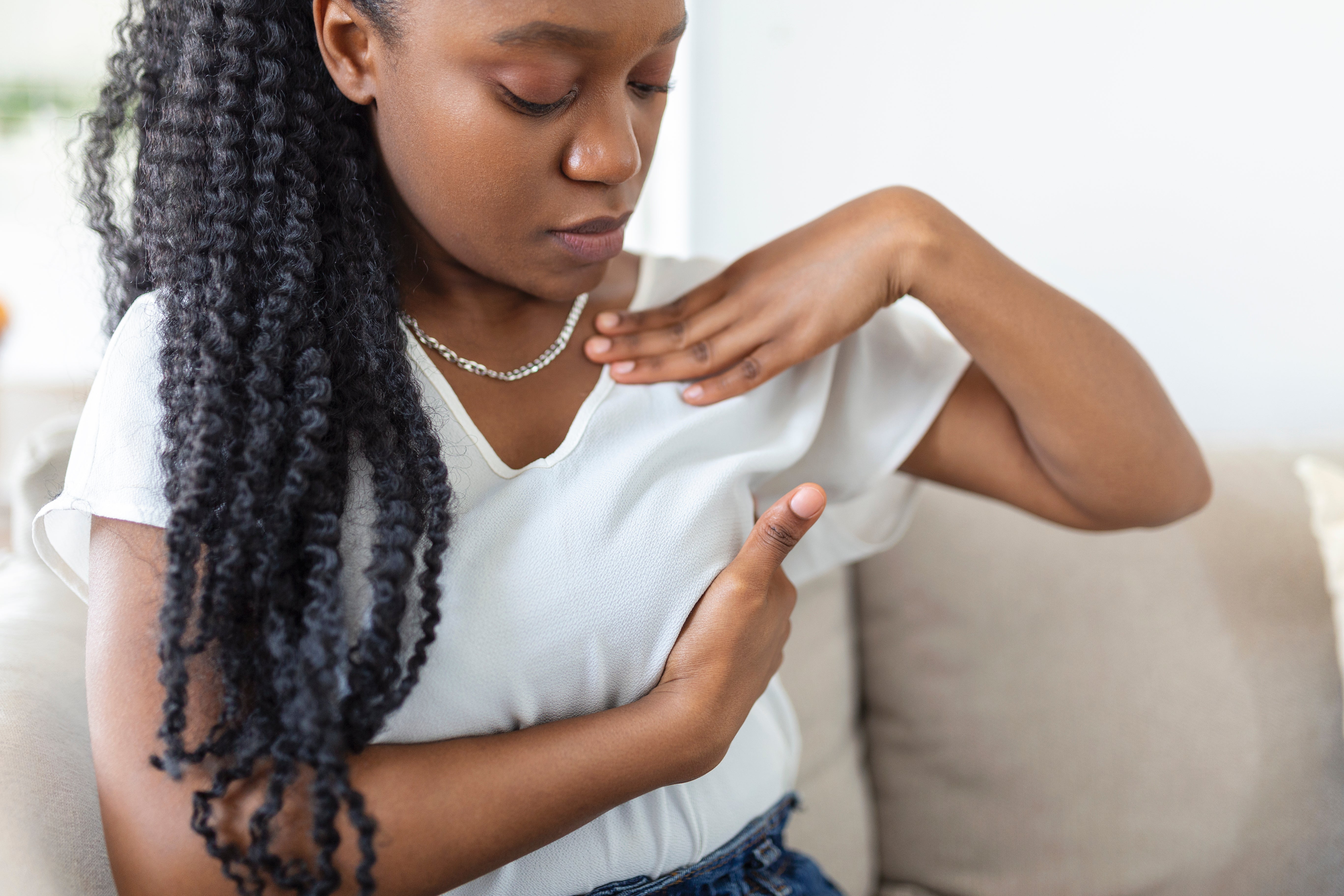Salt is a hot topic when it comes to feeding our babies. We hear from parents that they have been made to fear salt, so we wanted to shed some light on the facts about this necessary mineral.
But before we get into it, we want to make clear that we respect every parent’s right to choose what is healthiest for their baby. We’re simply sharing the info that we used in deciding how to approach salt in our own products. As always, you do you!
Why the sodium recommendation exists
Before we get into the science around salt in baby's food, it’s helpful to understand why the recommendation exists in the first place. The most common argument around avoiding salty foods for babies is that a baby’s kidneys are too immature to process excess salt.
But here’s the thing: there’s not really any reliable peer-reviewed research available to back up this claim.
We studied the USDA Infant Nutrition & Feeding Guide, the USDA Dietary Guidelines for Americans, 2020-2025, and the United Kingdom’s National Health Service’s recommendations while developing our products.
How was the sodium guideline established?
The next logical question when thinking about a baby’s salt intake is - how were the sodium chloride guidelines established in the first place?
Spoiler alert: it’s not super scientific.
The guidelines on sodium for infants are what’s called an “adequate intake” or AI. An adequate intake is used when there is not enough evidence to set an estimated average requirement (or EAR).
The USDA states that adequate intake values for sodium is 110mg per day for infants 0-6 months and 370 mg per day for 7-12 months. The United Kingdom’s National Health Service recommends no more than 400mg for infants up to 1 year old and 800mg for 1-3 years.
Why is there not enough evidence? Well, because it is generally undesirable or unethical to use babies for scientific research. So we have to rely on estimates.
The way that adequate intake is estimated is by looking at the daily average nutrient intake based on estimates of what a healthy group of people consumes in their diet. This approach assumes that because this group of people is generally healthy, then their intake of that particular nutrient (in this case, salt) must be adequate.
According to the National Health Service, food containing more than 600mg of sodium per 100g is considered to be high in salt. Our products contain a maximum of 90mg of total sodium per 99g.
So what do we look at for infants and salt intake? Breast milk. Thus, the adequate intake level is set based on average breast milk concentrations of sodium. Makes sense. But (big but), because breast milk nutrient levels vary significantly, it’s not quite a perfect comparison.
According to the Institute of Medicine, here’s how the sodium AI was established:
For infants 6 months and older, who are assumed to be eating breastmilk plus solid food, the AI was obtained by “adding the estimated mean intake of the nutrient from solid food to the amount of that nutrient provided by 600 mL of breast milk. Dietary data on nutrients from solid foods were unavailable for many of the nutrients. Thus, in many cases, the AI was obtained by extrapolating up from the younger infants and/or down from older age groups.”
So adequate intake is really just average intake. It’s not a daily maximum limit, and it’s definitely not a perfect science. It’s a better guess at an average consumption of salty food (breast milk and some solids) that varies quite a bit in sodium content.
All of the assumptions made around sodium content in breastmilk, amount of breastmilk consumed, amount of sodium in solid foods that babies eat, and amount of solid foods that babies eat result in an AI that turns out to be a pretty big estimate: the official AI of sodium for infants 7-12 months old is 370mg daily.
So how accurate is the average salt intake?
As we mentioned, there’s a pretty big range of “normal” when it comes to sodium content in breastmilk. It varies by woman, by her diet and lifestyle, and by her stage of postpartum. Research shows that it can range from 45 to 1703 mg/L! In fact, the Journal of Pediatric And Perinatal Epidemiology acknowledges, “our review of other studies examining breastmilk sodium suggests that there may be geographical and/or ethnic differences in breastmilk sodium concentration. For all of these reasons, we suggest that it is not appropriate to use a standardized measure of breastmilk sodium content when direct measurement is possible.”
Why we need sodium
Sodium is an essential nutrient for humans. It is needed for:
-
Normal muscle function: contracting and relaxing muscles
-
Maintaining proper fluid balance and helping to prevent dehydration
-
Proper nervous system function
-
Blood pressure regulation
Salty foods get a bad rap for concerns around heart disease, but these claims are largely based on outdated research (kind of like fat). The FDA, CDC, and American Heart Association recommend that Americans consume less than 2,300 milligrams of sodium per day, with an “ideal” limit of 1,500 mg per day for adults. But more current research calls this into question. A 2011 study published in the Journal of the American Medical Association looking at sodium intake and cardiovascular events, such as stroke and heart attack found that the likelihood of health problems was actually quite high in individuals consuming less than 2,000 mg of sodium per day. The lowest rate of events was at about 5,000 mg per day of sodium intake - more than double what is recommended by the AHA, FDA, and CDC. In addition, the study’s authors noted that one must get as high as 8,000 mg of sodium per day to see the same degree of problems as below 2g per day of intake.
This research was done in adults, so what about salty foods for babies? It’s a similar story. The risk of low blood sodium levels in infants is much more common than in high blood sodium levels (which can lead to high blood pressure). When high blood sodium levels do occur (leading to high blood pressure), they tend to be from dehydration, not too much salt consumption of added salt in the baby's diet.
Of course, we recommend the source of your sodium be to enhance the flavor of healthy whole foods, not bags of packaged processed foods, canned foods, snacks, and frozen processed foods.
Our approach
At Serenity Kids, our goal is to help babies grow up to be healthy and love healthy food, not processed foods. As part of this, we believe it is important to make healthy baby food taste good. And one way to do that is to add salt a bit, not too much salt. We add salt to boost flavor! And we know how important flavor is for little ones - introducing a variety of flavors, like savory and bitter veggies, cinnamon, and meat, can determine their flavor preferences and eating habits in your baby's diet for life. Meat and veggies often taste better with some salt, not too much salt, so to add salt helps babies learn to love those flavors and help them reap the benefits of an expanded palate for years to come.
Now, we don’t go nuts. Our baby foods are designed and labeled for 6+ months or 7+ months and never exceed the stated AI. But research shows that adding even a small amount of salt, not too much salt, to bitter fresh foods, like veggies, improves their flavor, reduces bitterness, and ultimately leads to greater intake by both adults and kids. And who doesn’t want that?
We also use a high-quality form of salt - Himalayan pink salt. It’s a mineral-rich source of sodium sourced from the Punjab region of Pakistan, near the Himalayan mountains (the Himalayas used to be underwater, and the salt from the sea remains in the region). Why do we avoid table salt for babies? "Avoiding white table salt is pretty commonplace in the Paleo community, but not because of this fortification; rather, it’s problematic that aluminum-based compounds are used as anti-caking agents in these salt products," states the Paleo Mom in this article where you can learn more about why we choose Himalayan pink salt. We also recommending reading this article about homemade baby purees for feeding ideas.
The bottom line on too much salt on baby foods
Our bodies (and our babies) need salt and the guidance around how much salt for babies is a pretty big estimation.

